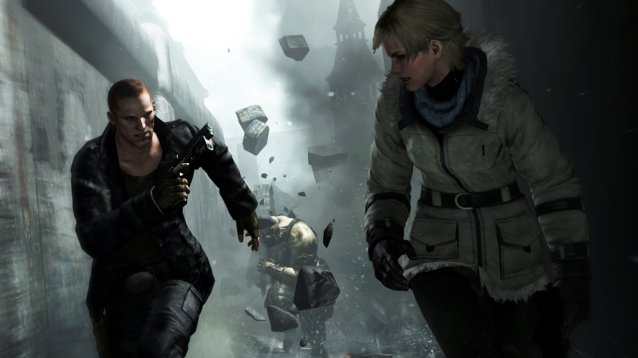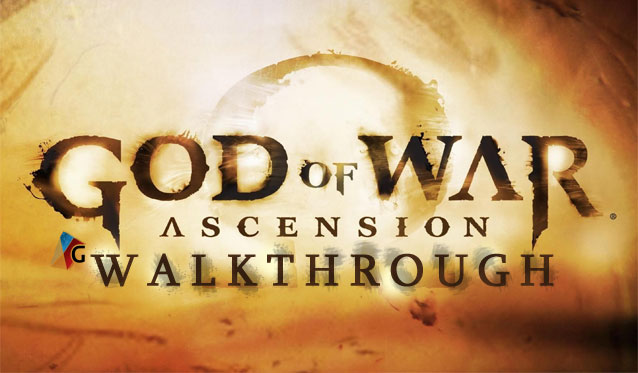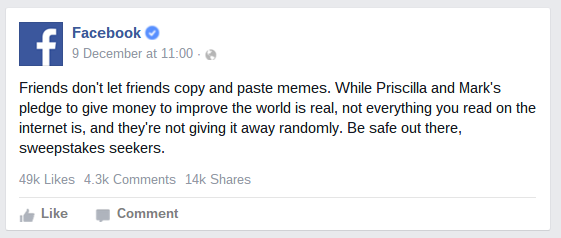

Just in case there was any concern that the gaming landscape would go more than five minutes without an HD remake, the folks at Capcom are here to put everyone at ease. Exclusively available on the PlayStation Network, Resident Evil: Chronicles HD Collection slaps a coat of high-def paint over the top of two original Wii releases, Resident Evil: The Umbrella Chronicles and Resident Evil: The Darkside Chronicles. Is it worth buying an upgraded version of games that were released within the same console generation? Temporarily ignore your thirst for brains, and read on to find out.
For players that don’t own Move hardware, this review is short and sweet. Don’t buy it. Don’t play it. Don’t even look in its general direction. Resident Evil Chronicles HD Collection is, after all, a remake of two Wii titles, which means that motion control is the intended method of interaction. A few points for effort may be given to the game for including a control set-up for the Dualshock 3 controller, but with no way to alter crosshair speed and an aim assist that can best be described as clunky and imprecise, playing this game with a regular controller is a bigger nightmare than the one being experienced by the characters on screen. Sorry, this party is for PlayStation Move owners, and the motion peripheral is just as precise as ever here.
Both games switch gameplay gears on the standard third-person Resident Evil formula, instead opting for an on-rails, first-person light-gun style shooter and fans of House of the Dead or Time Crisis will be right at home. Players that are unfamiliar with the franchise’s history will find a sort of CliffsNotes version of most of the events in the series. This actually makes the game a fairly useful tool for those looking to get caught up before Resident Evil 6 hits shelves.
The Umbrella Chronicles handles, mostly, Resident Evils 0, 1 and 3, while The Darkside Chronicles is there to pick up the slack on part 2, Code: Veronica and some events that precede part 4. There are also all new scenarios and side missions that help flesh out characters and events that longtime fans will likely enjoy. Lore fanatics will have some fun stuff to sink their teeth into.
The plot can still get confusing at times, even when presented as a giant whole like this, but then again, coherent storytelling was never the franchise’s strong suit. All of this results in a package that is quite full of content. Even though it’s a downloadable title, keep in mind that it’s still two full retail releases.
In terms of gameplay, it’s difficult to discuss the game as a singular package since the experiences that each game delivers, despite being the exact same type of game, are miles apart.
Starting with The Umbrella Chronicles, simply put — this is a light-gun shooter gone wrong. A key element of any on-rails game, since the player has no control over it, is the direction of pace and movement. This is where the game fails almost completely. The camera just plods along slower than the zombies on screen. Even when in-game characters suggest they run or hurry, the camera never picks up speed, destroying any sense of urgency the dialogue might have been trying to convey. This doesn’t make it a bad shooter, just kind of a dull one.
Just like Resident Evil: Operation Raccoon City, The Umbrella Chronicles falls victim to a clash between the game’s narrative genre, its current gameplay genre, and the series’ original gameplay genre. Horror is all about pacing, suspense, and fear of the unknown. Resident Evil’s core games capitalize on these aspects with ease. However, within the confines of an on-rails shooter, most of these elements are lost. It’s difficult to feel any suspense or fear when the player can assume that, every single time they turn around, there will be a monster there for them to shoot since that’s nearly the only mechanic the game utilizes.
Additionally, when two separate gameplay genres are blended together, this time survival horror and on-rails light-gunning, they need to be tweaked in order to bring the strengths of each into the foreground while cutting any elements that clash with each other. Unfortunately, The Umbrella Chronicles doesn’t know what it wants to be and winds up keeping almost every survival horror gameplay convention that ensures all the fun is sucked out of an on-rails shooter experience. Just like any real relationship, there has to be compromise on both sides to form a complete whole that works together as one new unit.
An easy example to point to is ammo. When the only thing the player is doing is shooting, there better be plenty of bullets lying around, right? Nope, this is one of the aspects of survival horror that the developer decided to keep. The game is mighty stingy with the ammunition. Players will find themselves doing a weapon-switching finger-dance between shooting every breakable object in the room with their regular handgun, looking for hidden bullets for the more powerful guns they are trying to save for the boss fights.
This lack of ammo wouldn’t be so bad if the levels didn’t feel as though they were cheaply designed to be difficult, with waves upon waves of zombies being thrown at the player just before the aforementioned big boss. And since another clashing survival horror aspect that was left in was the insane bullet-sponging of most enemies, even with repeated headshots, those last few encounters will drain your supplies quickly. Repeatedly being left with a pea-shooter for a three-stage boss battle doesn’t build intensity, just frustration. The game may want the player to try and be more methodical in order to conserve ammo, rewarding quick kills for finding critical hit spots, but those spots often seem to be about two pixels wide and quite difficult to line up given the game’s consistently wobbly camera.
The one aspect of survival horror that would have been nice to have seen some sort of incorporation goes back to the game’s subpar direction, and that is actual survival instinct. The game’s direction can’t make decisions for the player that are consistently stupider than anything the player would decide to do in the old third-person format. Why would Leon stand around to shoot a giant swarm of incoming bats when the door he needs to walk through to move on, and find safety, is two feet to his left? The game’s need to constantly have the player shoot at things creates more than a few head-scratching moments like that.
Moving on to The Darkside Chronicles, and at the risk of sounding almost comically brief, take the majority of the previously mentioned bad stuff and fix it, and that’s what the game is. Necessary compromises were made to make the game feel like a fluid, cinematic and logical experience. Bullets aren’t so hard to find, critical shots don’t feel as impossible to hit and when the characters need to escape danger, they run the heck out of there. The well directed pace truly delivers some edge-of-your-seat intensity at times reminiscent of Resident Evil 4. It’s almost hard to believe the total turnaround a few minor changes can make, but this is absolute evidence that when a developer listens to feedback and irons out some kinks, a sequel can offer a much better experience than the game before it.
Of course there are a few issues that plague both entries. Quicktime events are not so quick, and players will usually need to wait a beat before hitting the button that corresponds with the on-screen prompt otherwise it will not register. Old school conventions like bullets having no effect on an enemy until a preset animation is over is sure to frustrate newer players. But these gripes can be adjusted once the player knows they are there.
The HD-ification is definitely welcome here – although the addition doesn’t yield consistent results. The Resident Evil 0 and 1 portions of the game look little better than the Gamecube versions from last generation while the rest of the experience looks extremely polished and benefits greatly from the update.
Each game may now be bought separately, and it’s easy to recommend the more recent The Darkside Chronicles over The Umbrella Chronicles. Design lessons were clearly learned, gameplay mechanics spruced up and the motivation to create a well-blended genre mashup is much easier to see. Purchasing the entire collection will result in the ownership of a mixed bag of digital offerings due to the immensely divergent experiences between the two games, and players who need to do things in order may grow weary trying to get through The Umbrella Chronicles’ bitter shell before tasting the sweetness inside The Darkside Chronicles. However, for fans and newcomers alike, there’s definitely fun to be found here, especially when playing co-op, as well as some great content regarding the lore of the Resident Evil series. It just takes some patience to see it all. So whether or not a player is a series novice looking to get geared up for Resident Evil 6 or a longtime fan, this collection will deliver… about half of the time.
Resident Evil Chronicles HD Collection is currently available exclusively on the PlayStation Network as a bundle for $26.99 or separately for $14.99 each. This review was played primarily using the PS Move peripheral.




 5 Genius Money-Saving Tricks You Probably Didn't Know
5 Genius Money-Saving Tricks You Probably Didn't Know Miniature Game Consoles for Miniature Hands
Miniature Game Consoles for Miniature Hands American Voters Exposed Online, Apple Endures Terrible 2015... [Tech News Digest]
American Voters Exposed Online, Apple Endures Terrible 2015... [Tech News Digest] Pac-Man and the Ghostly Adventures 2 – Everything you need to know about the game .
Pac-Man and the Ghostly Adventures 2 – Everything you need to know about the game . Fallout 4: How to Throw Grenades Better
Fallout 4: How to Throw Grenades Better